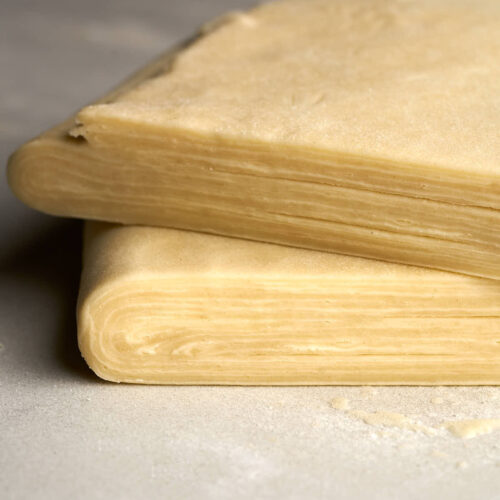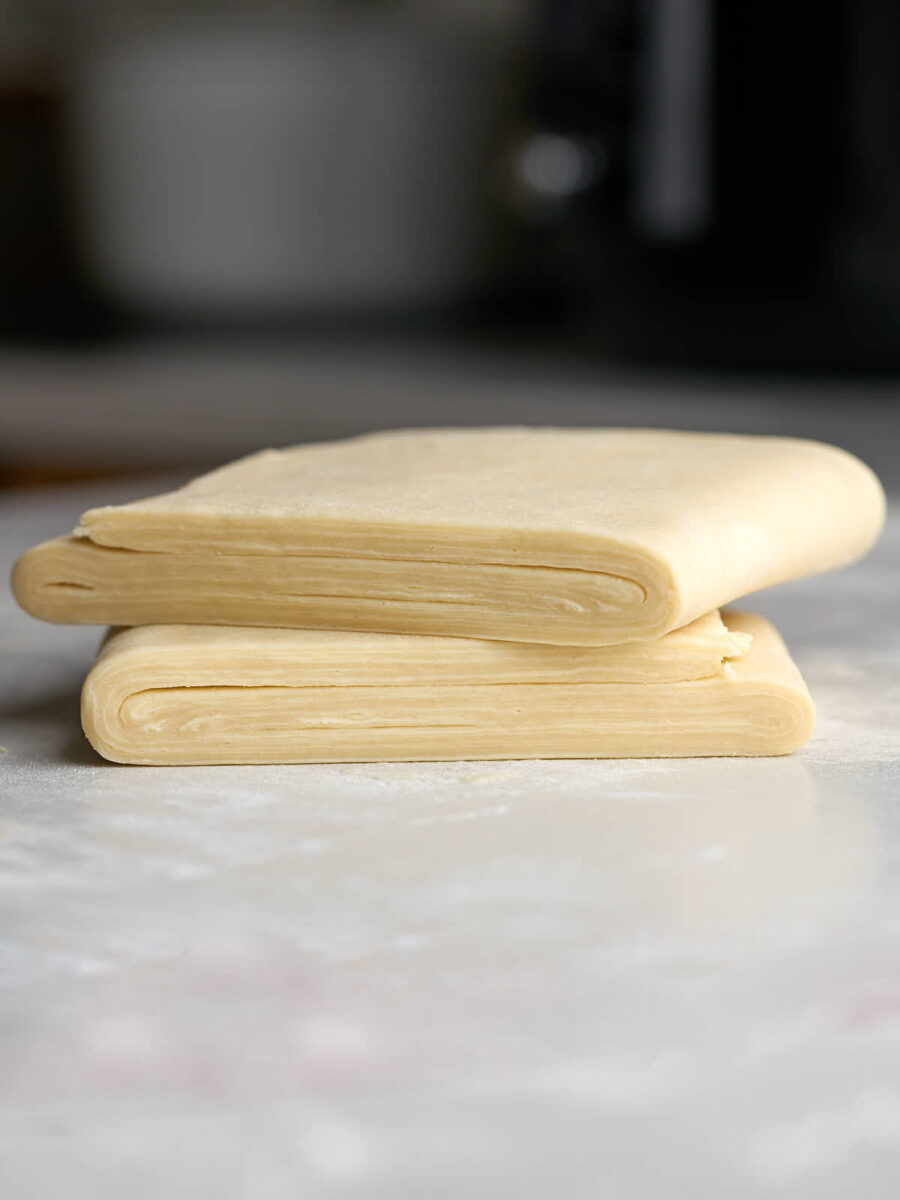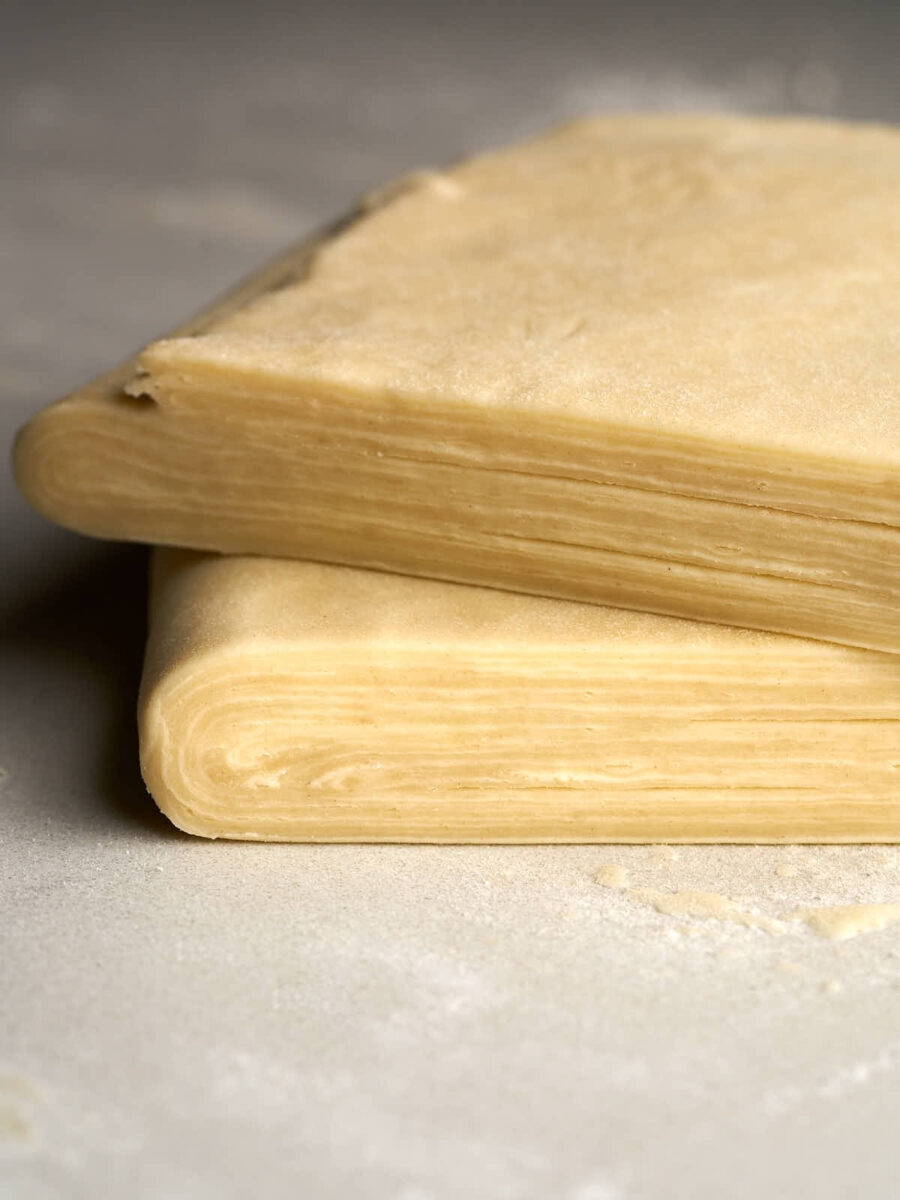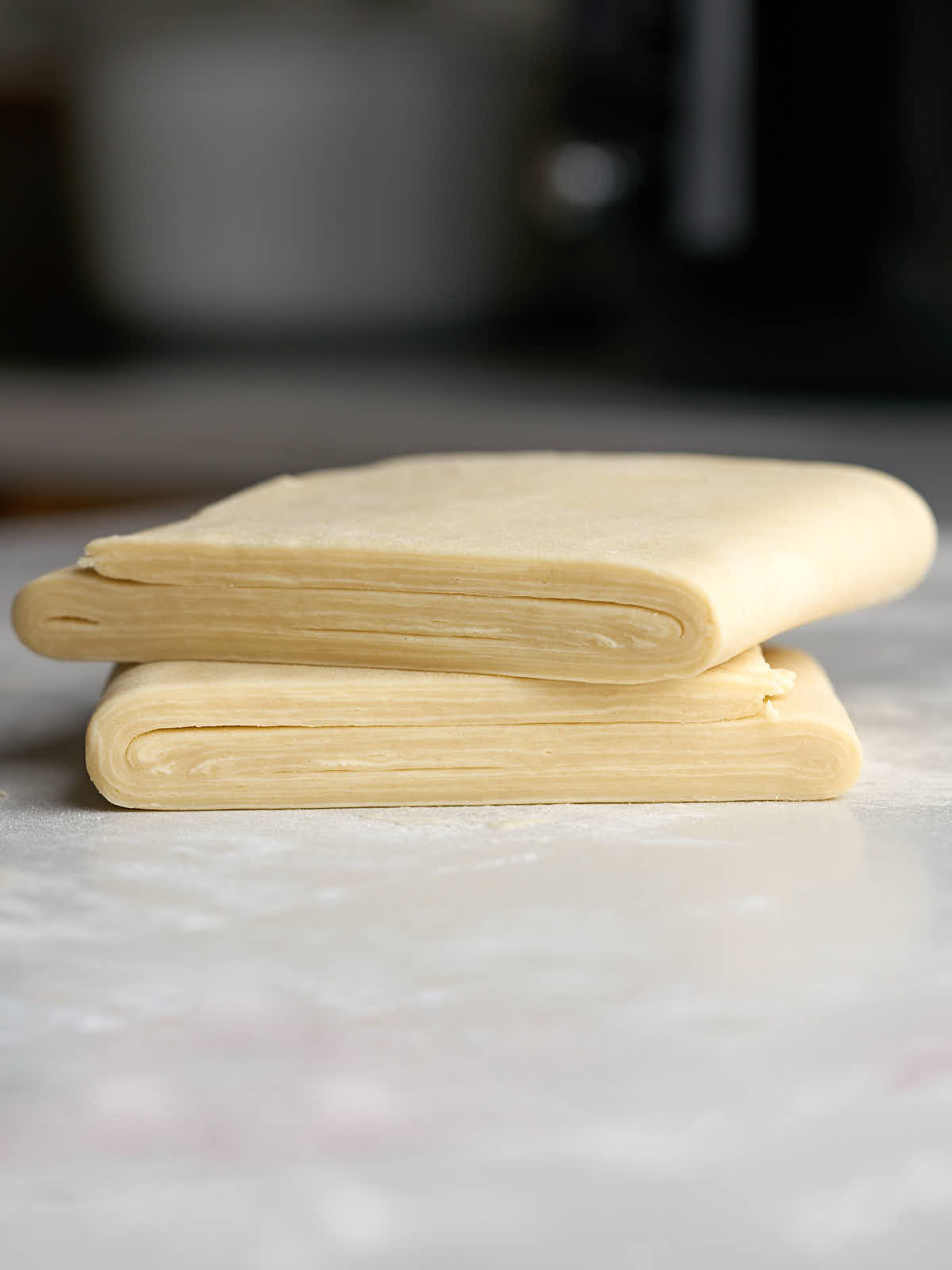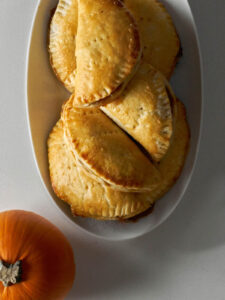This tender & flaky rough puff pastry is both versatile and reliable, making it a great fit for any recipe that calls for puff pastry. I often find making traditional puff pastry too time-consuming, but this rough puff is quicker to make and produces the tender texture you want in your pastries.
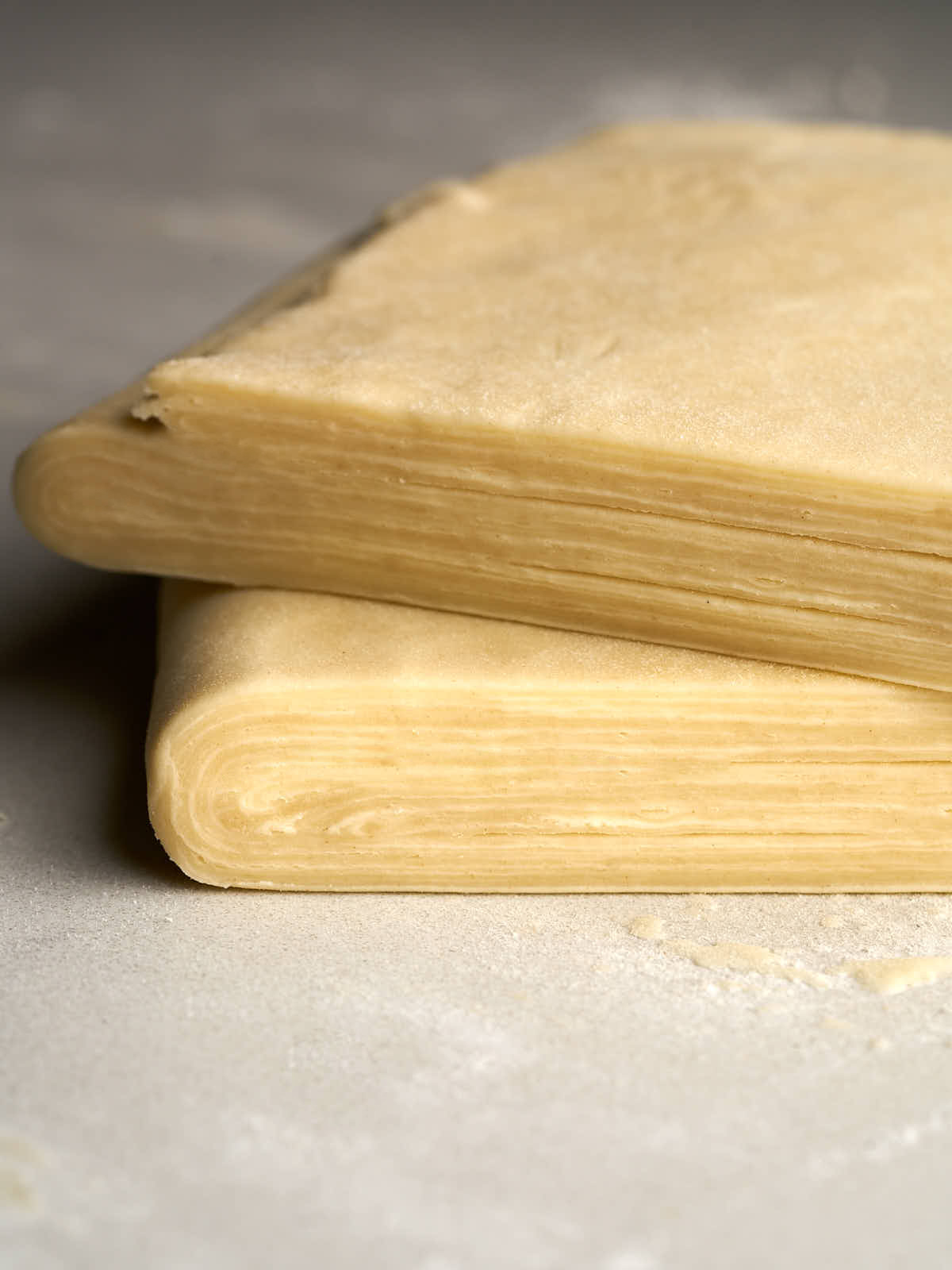
🌟Why You Should Master this Rough Puff Pastry Dough
🤔 Rough Puff Pastry vs Traditional Puff Pastry
Rough Puff Pastry
- Uses small butter chunks, and irregular butter pieces incorporated throughout the dough
- A simple, more foolproof method that’s more suitable for beginner bakers
- Flaky in texture with less-defined layers that you can’t necessarily see
Traditional Puff Pastry
- Uses a process called dough lamination, where you fold a cold butter block into the dough several times with rest periods in between
- More time-consuming and requires precision to maintain the cold butter layers, so it’s a better fit for more experienced bakers
- Even, continuous butter layers between the dough layers creating a crispier and lighter texture, with well-defined visible layers
🧾 Ingredients in This Recipe
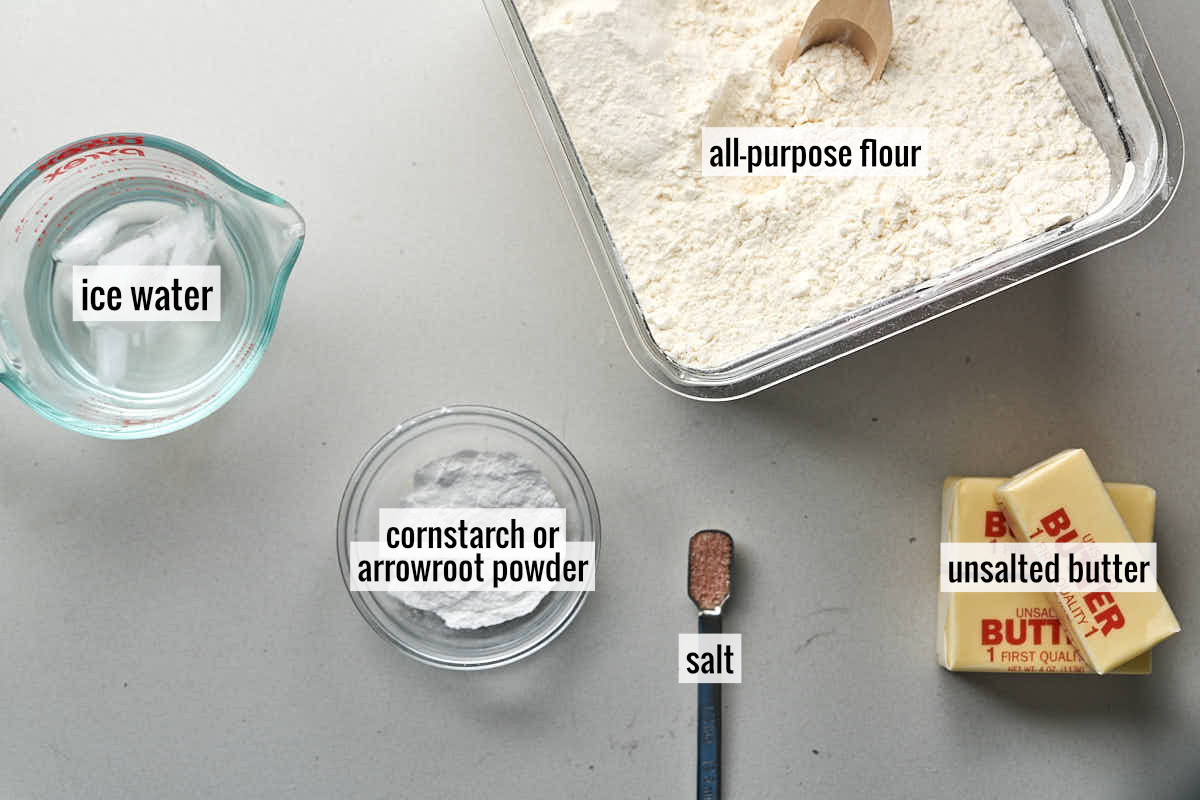
See the recipe card for full information on ingredients and quantities.
👩🍳How to Make Rough Puff Pastry
You can make this pastry up to 2 days in advance, and see below for freezing instructions.
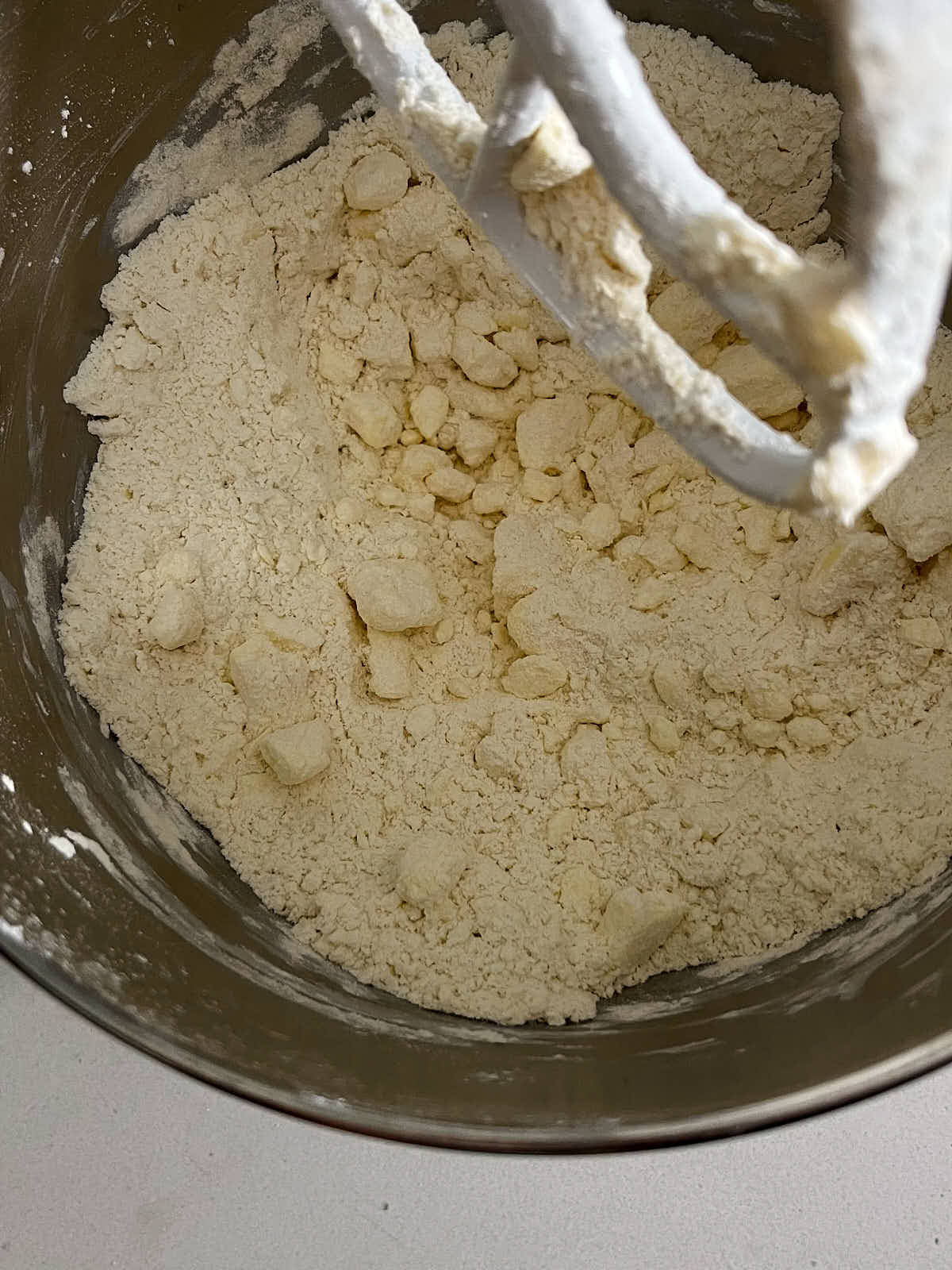
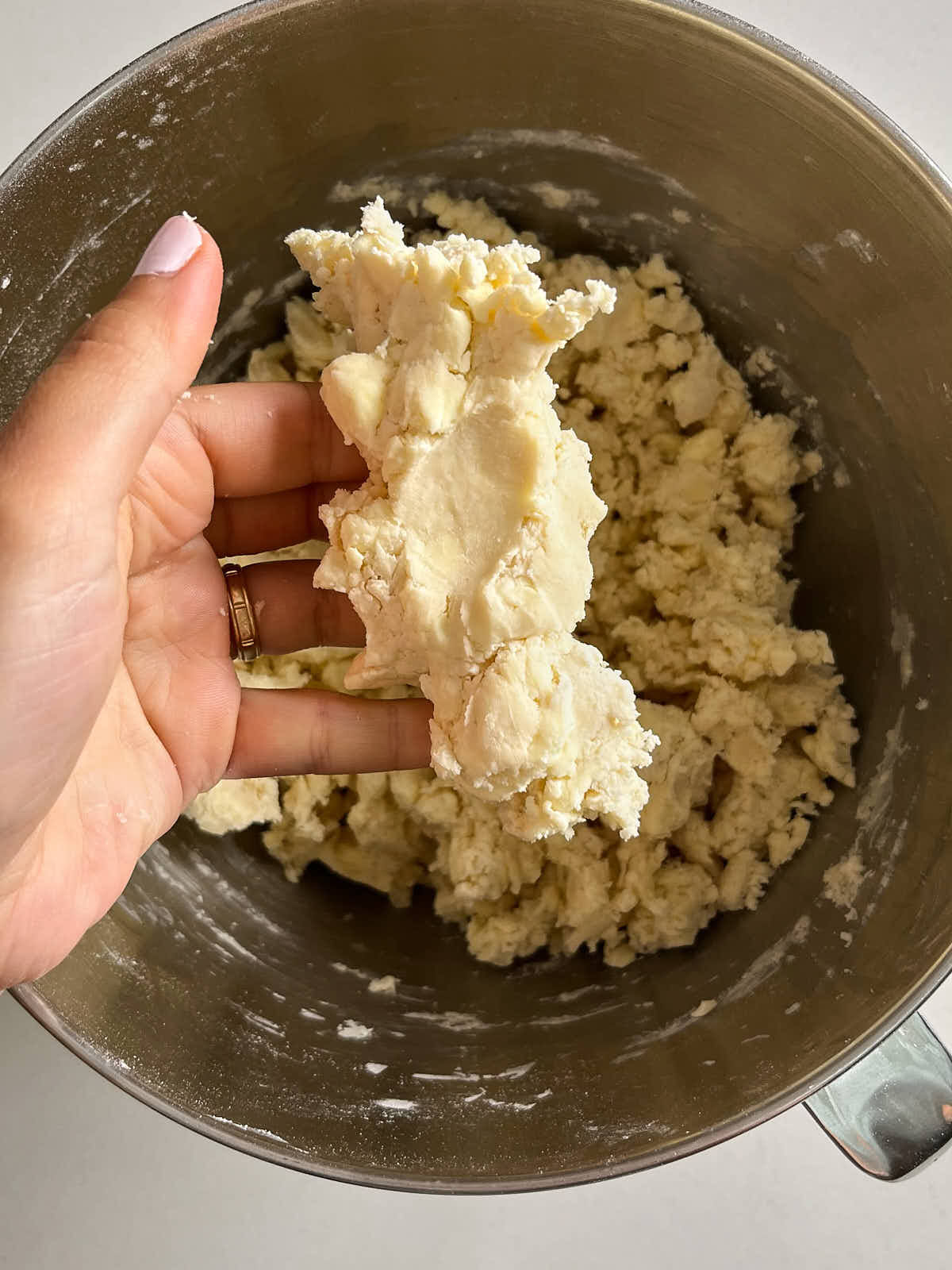
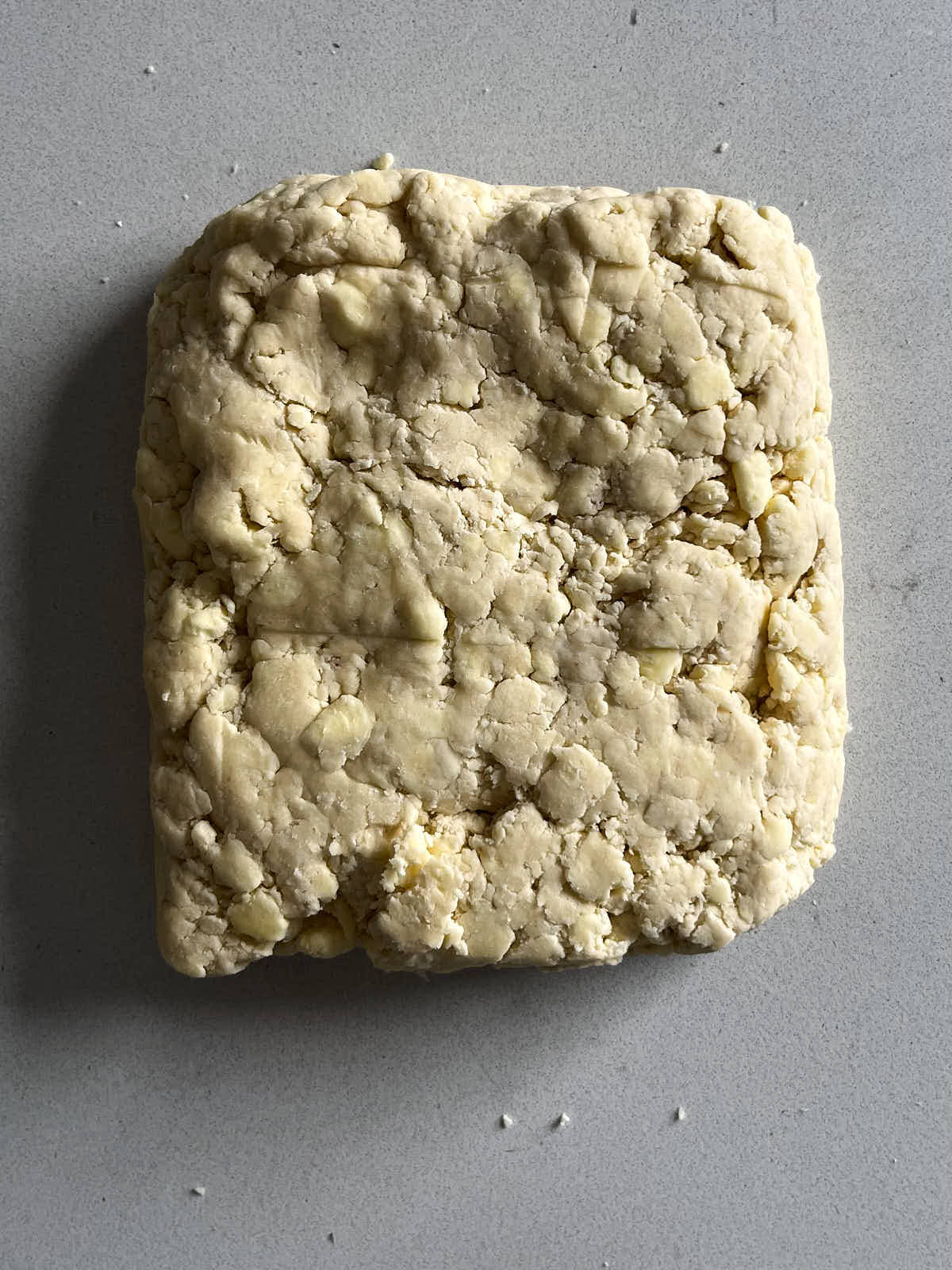
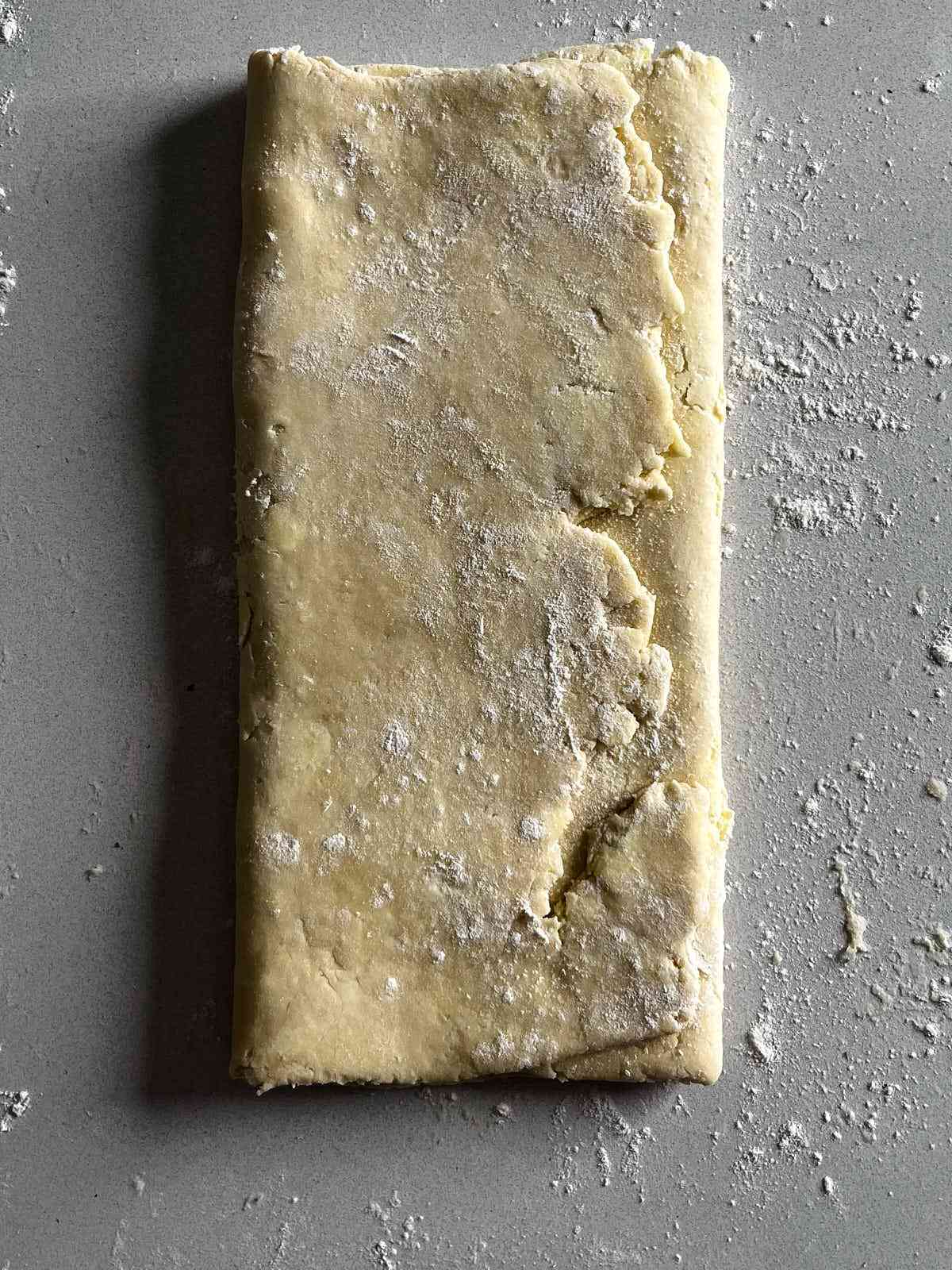
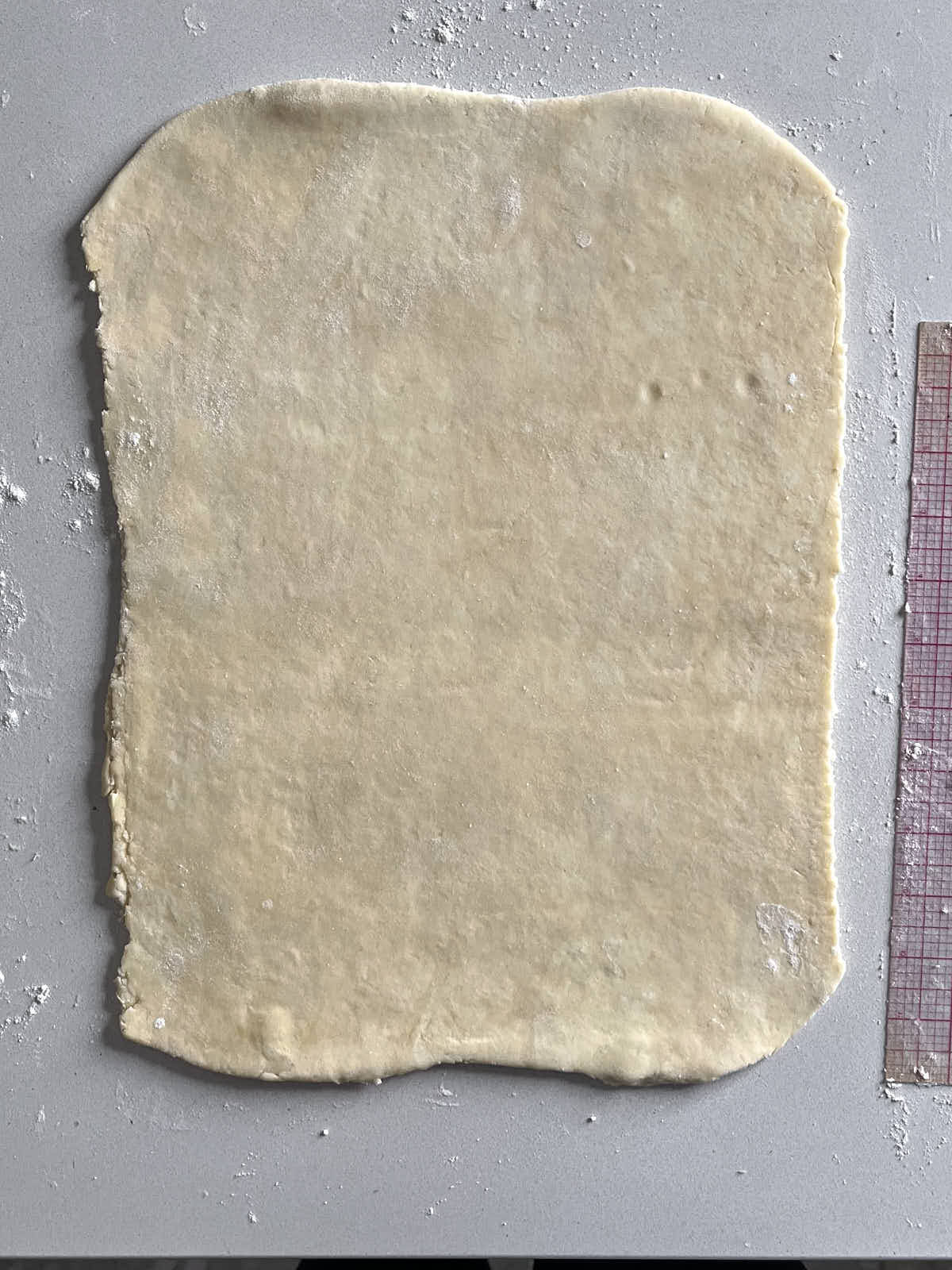
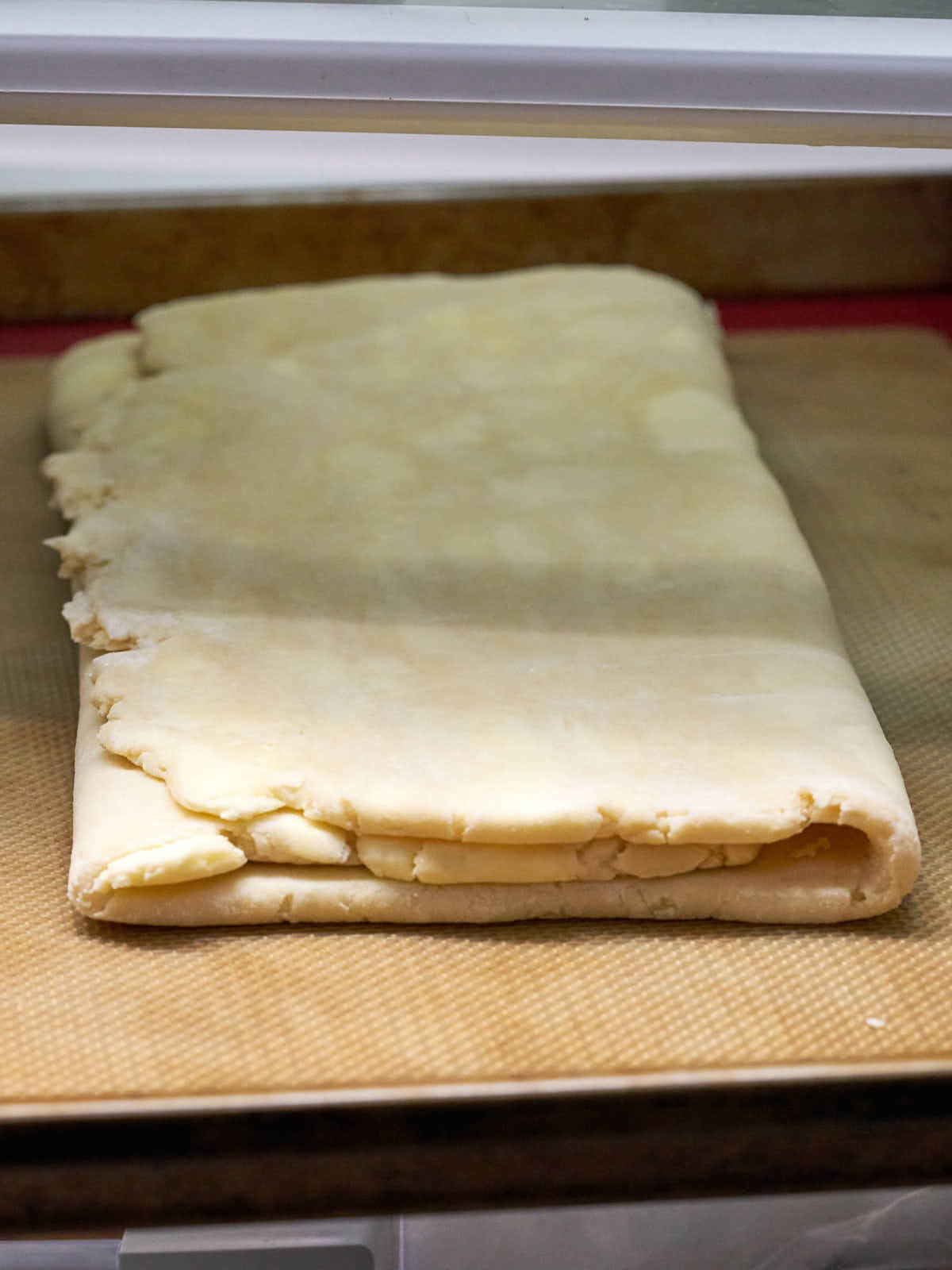
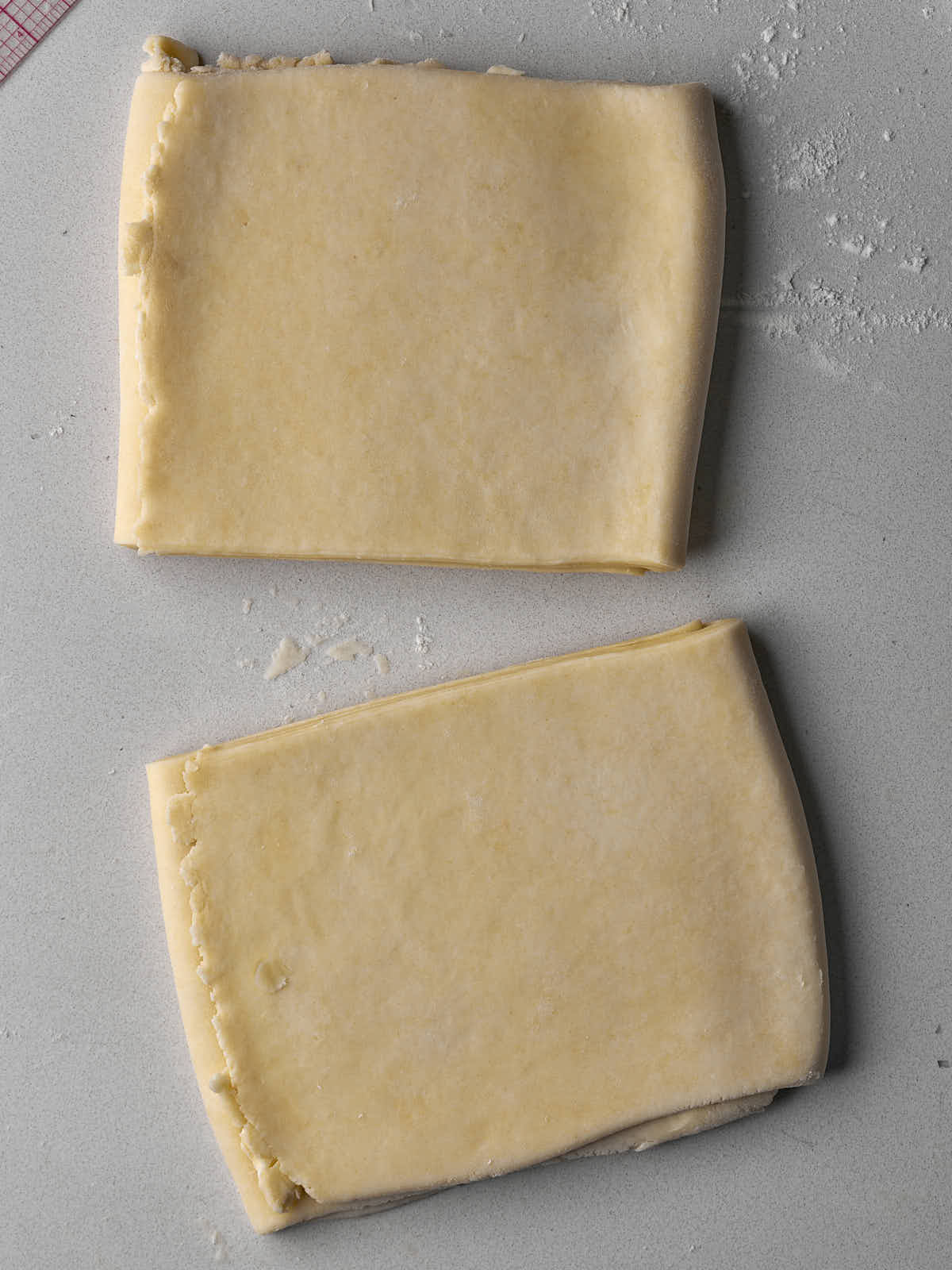
❄️ Freeze your rough puff to use it later ❄️
I love to get ahead on my baking for events or holidays by making a batch of rough puff and keeping it for use later. You can make it and store it in the fridge for 2 days, or freeze it for longer (several months) and thaw it before using.
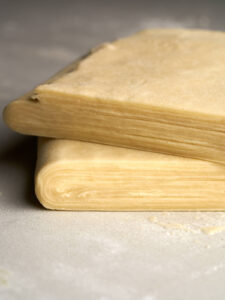
Extra Tender & Flaky Rough Puff Pastry
Print Recipe SaveIngredients
- 310 grams all-purpose flour 1-3/4 cups plus 1 tbsp
- 10 grams cornstarch or arrowroot powder, 1 tbsp
- ½ tsp sea salt
- 1.5 cups unsalted butter cold, 339 grams, cut into 1-tablespoon pieces
- ½ cup ice water less 1 tbsp, 100 mL
Instructions
- Add the flour, cornstarch/arrowroot powder, salt, and cold butter to the bowl of a stand mixer fitted with the paddle attachment. Run on the stir setting for 30 seconds until the flour is coated with butter. You are not incorporating the butter, and it will still be in chunks at this point.
- Slowly add in the ice water while the mixer is stirring. Once the flour is incorporated, test the dough by squeezing a handful. If it sticks together, it is ready. If it is crumbly and dry, add a little more water.
- Press the dough into a square. You can use a bench scraper to help you so you don’t get the butter too warm. It will look rough, and that is OK.
- Lightly flour the top of the dough and roll it out into a 10"x15" rectangle. Brush off any excess flour and fold the 15" side toward the center 1/3 of the way up. Fold the other 1/3 over the top like you would a piece of paper going into an envelope. If the dough is getting too soft, refrigerate for 20 minutes, then continue.
- Turn the dough 90-degrees, lightly flour the top of the dough and again roll it out into a 10"x15" rectangle. Brush off any excess flour and fold the 12" side toward the center 1/3 of the way up. Fold the other 1/3 over the top like you would a piece of paper going into an envelope.
- Turn the dough 90-degrees, lightly flour the top of the dough and again roll it out into a 10"x15" rectangle. Brush off any excess flour and fold the 10" side toward the center 1/3 of the way up. Fold the other 1/3 over the top like you would a piece of paper going into an envelope. If the dough is getting too soft, refrigerate for 20 minutes, then continue.
- You want to fold (turn) the dough 4 times total for each rectangle. After your final folding, split the dough into two rectangles. When ready to use, roll each out into 10"x15" rectangles and use them for any of your favorite puff pastry recipes.

